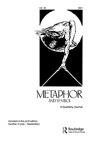为什么是诗歌?:符号脚手架与认知的诗意建筑
IF 3.3
3区 文学
0 LANGUAGE & LINGUISTICS
引用次数: 0
摘要
摘要诗歌是一个过程。虽然人们通常将诗歌称为文本对象,但我们的诗歌体验是内在的体现和实施,这意味着我们将诗歌体验为我们作为格式塔表征而情境化的事件。我们也将隐喻作为过程来体验,这些过程源于经验格式塔,扩展了格式塔结构,为我们对世界的体验奠定了概念基础。这篇文章认为,就像隐喻一样,诗歌格式塔可以映射到其他体验上,帮助人们驾驭自己的世界。虽然这种诗学思想在很大程度上被学者们认为是在过去6万年的某个时候现代人类思想出现之后才存在的,但作者认为,诗学思想可能是在现代认知之前产生的,而且实际上可能已经产生了它。文章所概述的具体化和再现性诗歌方法的一个关键方面是,人们对诗歌的体验从根本上是语境和情感的。此外,由于情感是意义的主要来源,我们对诗歌的情感反应使其成为扩展我们自己的概念装置、增强情商和产生共同价值观的有用工具。本文章由计算机程序翻译,如有差异,请以英文原文为准。
Why Poetry?: Semiotic Scaffolding & the Poetic Architecture of Cognition
ABSTRACT Poetry is a process. While people typically refer to poems as textual objects, our experience of poetry is inherently embodied and enacted, meaning that we experience poems as events that we contextualize as gestalt representations. We experience metaphors, too, as processes, which arise from experiential gestalts, that extend gestalt structures and lay the conceptual foundation for our experience of the world. This article argues that, like metaphors, poetic gestalts can be mapped onto other experiences to help people navigate their worlds. While this kind of poetic thought has largely been considered by scholars to have existed only since the emergence of the modern human mind sometime in the last 60,000 years, the author suggests that poetic thought likely arose prior to modern cognition, and may have in fact given rise to it. A crucial aspect of the embodied and enactive approach to poetry outlined in the article is that people’s experience of poetry is fundamentally contextual and emotional. Furthermore, because emotions are a primary source of meaning, our emotional responses to poetry make it a useful tool for extending our own conceptual apparatuses, enhancing emotional intelligence, and for generating shared values.
求助全文
通过发布文献求助,成功后即可免费获取论文全文。
去求助
来源期刊

Metaphor and Symbol
Multiple-
CiteScore
2.90
自引率
0.00%
发文量
23
期刊介绍:
Metaphor and Symbol: A Quarterly Journal is an innovative, multidisciplinary journal dedicated to the study of metaphor and other figurative devices in language (e.g., metonymy, irony) and other expressive forms (e.g., gesture and bodily actions, artworks, music, multimodal media). The journal is interested in original, empirical, and theoretical research that incorporates psychological experimental studies, linguistic and corpus linguistic studies, cross-cultural/linguistic comparisons, computational modeling, philosophical analyzes, and literary/artistic interpretations. A common theme connecting published work in the journal is the examination of the interface of figurative language and expression with cognitive, bodily, and cultural experience; hence, the journal''s international editorial board is composed of scholars and experts in the fields of psychology, linguistics, philosophy, computer science, literature, and media studies.
 求助内容:
求助内容: 应助结果提醒方式:
应助结果提醒方式:


